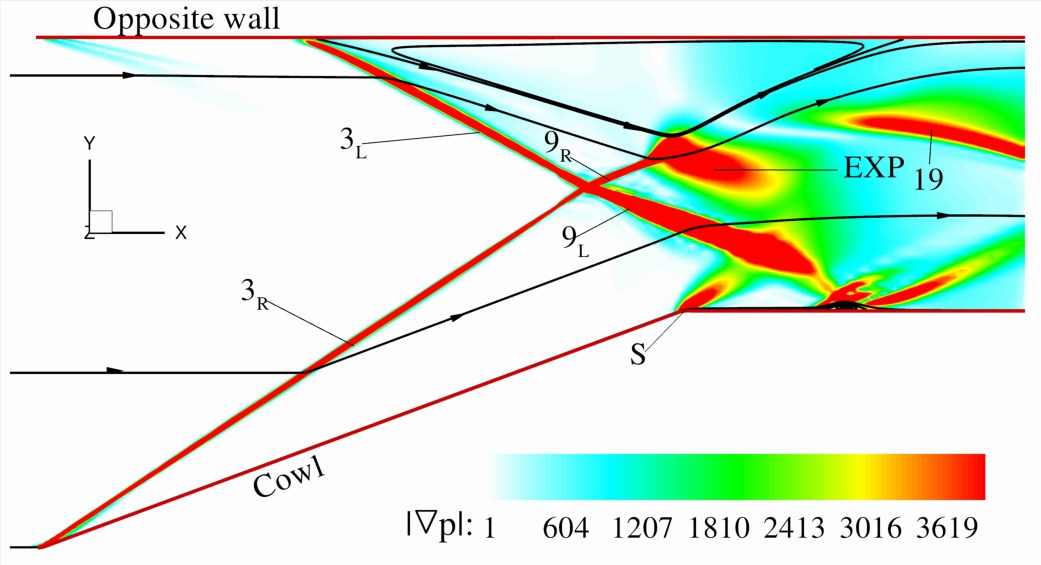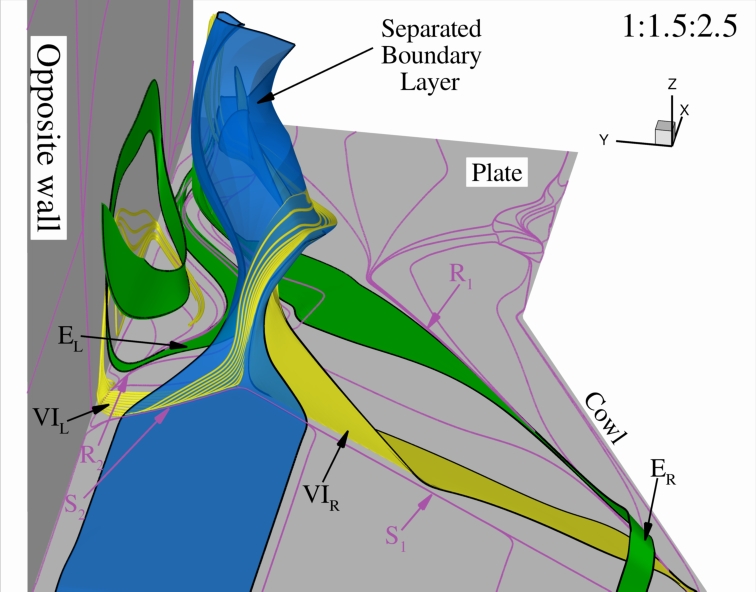Three-dimensional shock/turbulent boundary layer interaction in a simulated scramjet inlet
The interaction of shock waves generated in a scramjet inlet with the boundary layer on the walls can result in a
complex flowfield. This can have important implications for the performance of the inlet. Understanding the flow physics
and predicting them reliably is a challenging task. In the current paper, the three-dimensional flowfield generated by
the interaction of the cowl shock with the boundary layers on the walls of the inlet is studied computationally. The
solution is analysed in detail and a description of the flow topology is presented. The side wall boundary layer is found
to separate and roll up into a large longitudinal vortex. The flow is also characterized by the formation of a complex
pattern of shock waves interacting with each other. The flowfield has striking resemblance to the double-fin configuration
that has been studied extensively in literature.
Ref: Pawar, V., Rane, N., and Sinha, K., "Three-dimensional shock/turbulent boundary layer interaction in a simulated scramjet inlet", Symposium on Applied Aerodynamics and Design of Aerospace Vehicle (SAROD), Bangalore, Dec 2009
Representative results:

Shock structure at symmetric plane of a scramjet inlet duct.

Stream surfaces showing the flow separation on the side wall of an inlet duct.

